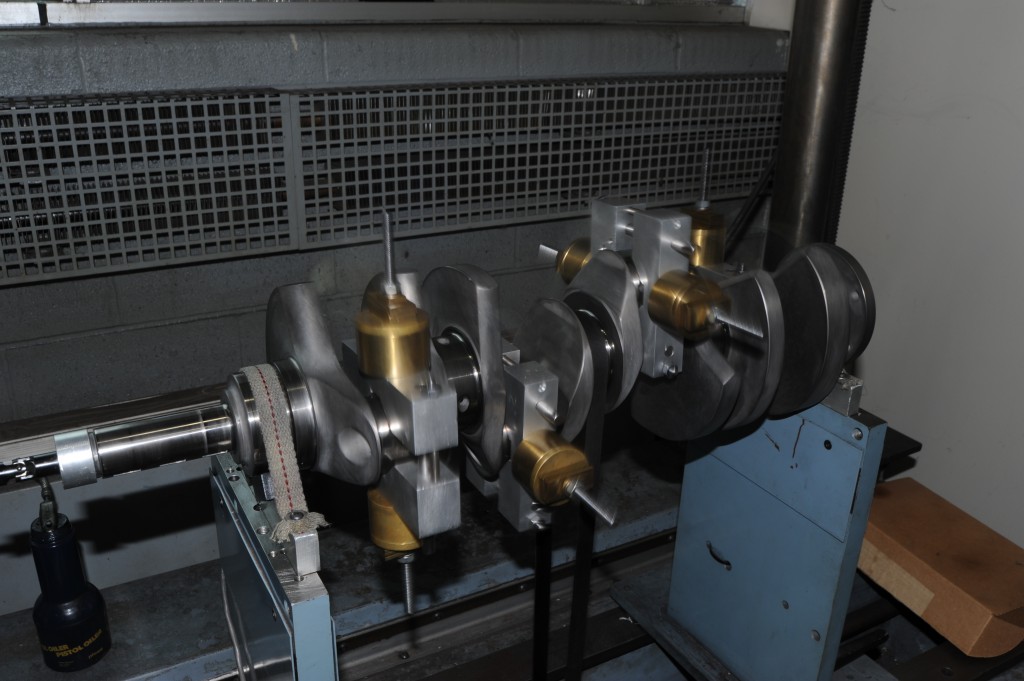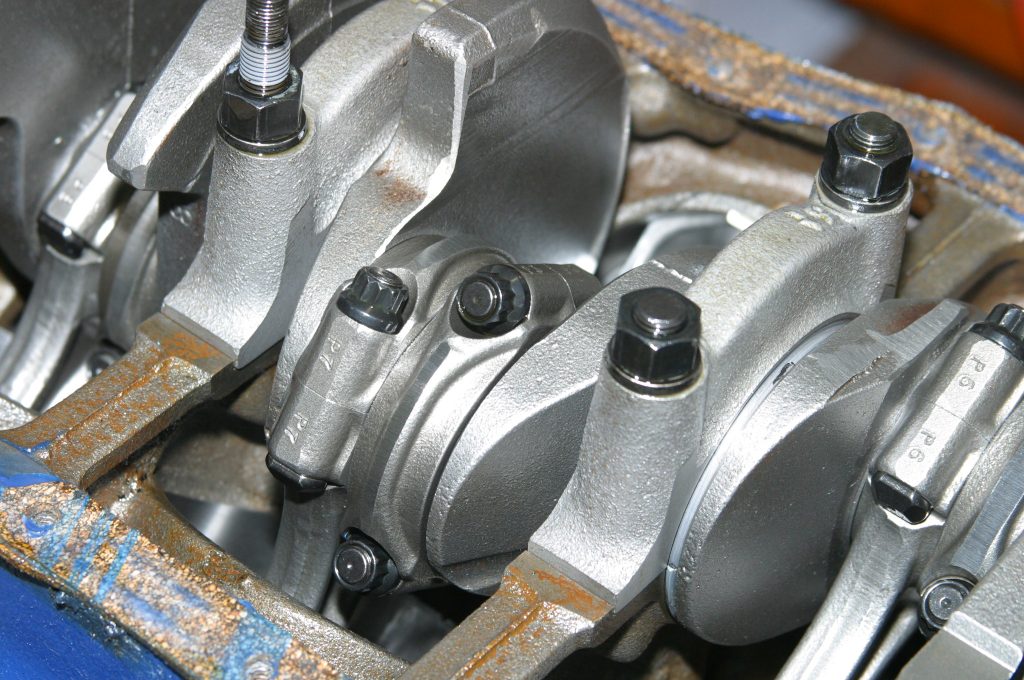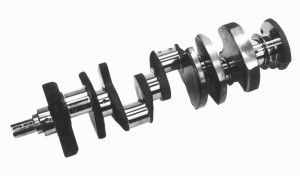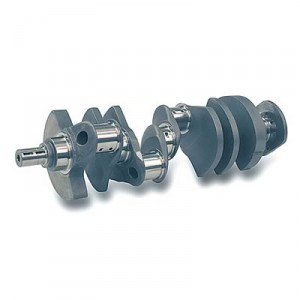Whether it’s an old-school Windsor block, vintage FE, or modern modular motor, your Ford engine is only as strong as its crankshaft. Without a good, strong crankshaft, your high performance Ford engine can experience a complete and total meltdown. That’s why it’s important that you match your crankshaft to your specific application and performance expectations.
Whether you’re building a Ford mill from the ground up or adding modifications to an existing engine, you get what you pay for. According to Summit Racing technical adviser Carl Pritts, one of the most common mistakes people make is budget shopping for a crankshaft and then expecting it to last. Another recurring mistake:
“Shopping at a swap meet…parts here are typically worn out or broke,” Pritts said.
We turned to the experts in the Summit Racing technical department for advice on choosing the right crankshaft for a Ford engine. While budget shouldn’t be a major consideration when choosing the “backbone of your engine,” things like engine displacement, compression, power, and future plans do come into play.
Selecting the Right Crankshaft Material
There are four main types for material used for crankshaft construction: cast or nodular iron, cast steel, forged steel, and billet.
Cast and nodular iron crankshafts are what typically come from the OE manufacturer. Most cast iron crankshafts have a tensile strength in the 65,000-80,000 psi range. Some companies, including Scat, will mix graphite with its cast iron cranks to improve fatigue resistance. Nodular iron crankshafts raise the bar slightly, offering a tensile strength closer to the 100,000 psi range.
If you’ve got a stock or mildly modified street application, cast or nodular iron cranks are an affordable way to go. These crankshafts are usually good for 300 to 400 horsepower reliably and can withstand some occasional weekend track usage.
Cast steel crankshafts are the next step up from iron. Cast steel begins life as a liquid and is then poured into a mold before cooling. This is a relatively inexpensive manufacturing process, but the steel construction makes these crankshafts much stronger than OE designs. According to Pritts, cast steel crankshafts are ideal for applications up to 500 horsepower reliably.
“Cast crankshafts are ideal for street applications running pump gas with good driving manners,” Pritts said.
These cranks are best used with 289 to 393 cubic-inch engines with 8.5:1 to 10:1 compression ratio, mild cam, and possibly a mild power adder like low-horsepower nitrous kit, he said. For larger-cube engines with 11:1 to 14:1 compression and major upgrades—large-port aluminum heads, big camshaft, large headers, and even a power adder—he recommends going with a forged crankshaft.
Forged steel crankshafts are ideal for highly modified engines and most race applications. During the forging process, a singular chunk of molten steel is compressed and essentially squeezed into its final state using heavy-duty presses and dies. This manufacturing process, along with the type of steel used, makes forged crankshafts very sturdy when properly installed.
Crankshafts are typically made from one of these high-strength steels:
- 1053: carbon steel with tensile strength around the 110,000 psi range
- 5140: chromium steel with tensile strength around the 115,000 psi range
- 4130/4140: chromoly steel with tensile strength at about 120,000-125,000 psi
- 4340: nickel chromoly with about 140,000 psi tensile strength
There are also two types of forging processes: twist and non-twist. In the simpler twist method, the dies are arranged in a single plane, but the raw forging must be twisted to create the offset journals in the crankshaft. The non-twist forging process, which is now used by most aftermarket crankshaft manufacturers, uses more complex dies to simultaneously forge all four crank throws. In theory, this causes less internal stresses in the forging than the twist method.
Depending on the type of steel and manufacturing process, Pritts says forged crankshafts can handle between 600 and 1,000 horsepower reliably.
At the very top of the food chain are billet steel crankshafts. These cranks start as a solid bar of high-grade steel and are then carved and machined into the final crankshaft shape. Because of the machining process, these are considered by many to be the strongest crankshafts and are often not given rated power limits. However, that same machining process also makes billet crankshafts the most expensive. They are typically used in higher-end, ultra high-horsepower race vehicles.
Matching Crankshaft to Engine
Here are some basic specifications you should know when choosing a crankshaft for your Ford engine:
| Ford Stock Engine Bore and Stroke Guide | ||
|---|---|---|
| Displacement (Cubic Inches or Liters) | Bore (Inches) | Stroke (Inches) |
| Ford Windsor Family | ||
| 221 | 3.500 | 2.870 |
| 260 | 3.800 | 2.870 |
| 289 | 4.000 | 2.870 |
| 302 | 4.000 | 3.000 |
| 351W | 4.000 | 3.500 |
| Ford 335 Family | ||
| 351C | 4.000 | 3.500 |
| 351M | 4.000 | 3.500 |
| 400 | 4.000 | 4.000 |
| Ford FE Family | ||
| 332 | 4.000 | 3.300 |
| 352 | 4.000 | 3.500 |
| 360 | 4.050 | 3.500 |
| 390 | 4.050 | 3.780 |
| 406 | 4.130 | 3.784 |
| 410 | 4.050 | 3.980 |
| 427 | 4.230 | 3.780 |
| 428 | 4.130 | 3.980 |
| Ford 385 Family | ||
| 429 | 4.360 | 3.590 |
| 429CJ | 4.360 | 3.590 |
| 460 | 4.360 | 3.850 |
| Ford Modular Family | ||
| 4.6L | 3.552 | 3.543 |
| 5.0L (Cammer) | 3.700 | 3.543 |
| 5.0L Coyote | 3.629 | 3.647 |
| 5.4L | 3.552 | 4.165 |
| 5.8L | 3.681 | 4.230 |
The numbers above are stock engine configurations. You can also create a number of stroker combinations for Ford engines by altering these stock displacement engines with different crankshaft strokes, connecting rod lengths, etc. Common stroker options for Ford include 331, 347, 393, and 408 cubic inch setups. Summit Racing offers a great tool to calculate stroker possibilities and parts combinations—simply type in your desired cubic inches to see the engine, crankshaft, and stroke you’ll need.
Keep in mind, stroker engines often require special measures to ensure the crankshaft and connecting rods fit within the given confines of the engine. This could require additional engine clearancing.
That’s a topic for a whole ‘nother post.
A Word About Balance

According to Pritts, one of the most common mistakes is not having the crankshaft properly balanced. All crankshafts must be balanced to your piston and connecting rod combination, and usually the crankshaft manufacturer will list how its product is intended to be balanced.
Internally balanced crankshafts can use the counterweights alone to balance the crankshaft. Externally balanced cranks often require external items to be properly balanced. This can be added at the harmonic damper and/or flywheel. Most Ford crankshafts are external balance.
You should always send your rotating assembly out to a properly equipped machine shop to have the final balance done.
Other Considerations
Crankshafts may be manufactured with a variety of additional process to improve fatigue resistance or lighten the overall mass. For example, many steel crankshafts can be induction hardened, shot peened, or cryogenically treated for added strength. You can learn more about those processes here. Crankshafts may also have radiused journal fillets, which place added material where the journals meet the crank cheeks—a typical weak point. To lighten the overall weight, crankshafts may also be gun-drilled or come with slotted counterweights.
By doing your homework, you’ll find the right Ford crankshaft for your engine.




Do you have a crankshaft for a 1956 Ford 312 engine?
how big of a crank can I put in a 4.6
What is the weight of a Boss 302 crankshaft and a stock 302 ?1970 year. Thank you
Dear Sir
iam nihal samarasena , we need crank shaft lister engine part number lister 328-51180 or Ford A1608158
Thanks
Nihal
I have two 351’s both as far as I know were manufactured, The bolt patterns on the crankshafts are different could you help me with this? The fly wheel won’t bolt on to the motor that is good.
The Ford FT truck crank is “steel”but I have a few questions.
1. What kind of steel and tensile strength?
2. Forged or cast? Twisted or non?
3. Can it be offset ground for more stroke, and rod journals reduced to 2.2? At what point of combination does journal overlap become an issue ?
4 How aggressively can the throws, fillets and balance throws be narrowed to reduce weight, I would like to reduce it to 35-40 lbs maximum, 8000 rpms 700 hp 4.125 bores x 4.? stroke Ford FE.
If this crankshaft I have, 3.79 stroke is not feasible what do you recommend?